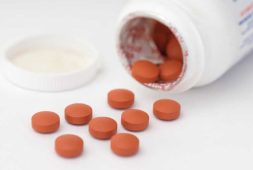
According to Parkinson’s Foundation, ‘Parkinson’s disease (PD) is a neurodegenerative disorder that affects predominately dopamine-producing (“dopaminergic”) neurons in a specific area of the brain called substantia nigra.’
When degeneration of these neurons occurs, it prevents the transmission of signals that control the specific muscle movements, which leads to tremors – involuntary muscle contractions or balance problems which best characterize this type of health disorder.
A research team at the University of Geneva (UNIGE) looked into the destruction of these dopaminergic neurons, using the fruit fly as its study model. The scientists managed to identify one key protein in flies, as well as mice, which not only plays a protective role against PD, but could even be used as a new therapeutic target.
Aside from the rare times when PD involves just a single gene, most Parkinson’s cases actually end in an ‘interaction between multiple genetic and environmental risk factors.’ But, one common element that comes along with the onset of this degenerative disease is the dysfunction of mitochondria in dopaminergic neurons. These are the tiny factories within the body’s cells that are responsible for the production of energy, as well as for activating the cell’s self-destruct mechanism when they undergo damage.
From the laboratory of Professor Emi Nagoshi in the Department of Genetics and Evolution at the UNIGE Faculty of Science, she uses the Drosphila, or the fruit fly, to study the mechanisms of dopaminergic neuron degeneration.
In addition, her group is also very interested in the Fer2 gene, ‘whose human homolog encodes a protein that controls the expression of many other genes and whose mutation might lead to Parkinson’s disease via mechanisms that are not yet well understood.’
During a previous study, a scientific team showed that the mutation in the Fer2 gene positively caused Parkinson’s-lie deficiencies in flies, such as a delay in the initiation of movement. Moreover, there were also observed defects in the shape of a the mitochondria of dopaminergic neurons, which were incredibly similar to those that are seen in Parkinson’s patients.
How to Protect the Neurons
After finding out that the absence of Fer2 causes Parkinson’s disease-like conditions, the research group also tested if, on the other hand, having an increase in the amount of Fer2 in the cells could actually have a protective effect.
When the flies are exposed to free radicals, their cells undergo oxidative stress, leading to the degradation of dopaminergic neurons. On the other hand, scientists were also able to see that oxidative stress doesn’t have any deleterious effect on the flies if they happen to overproduce Fer2, which confirms their hypothesis of its protective role.
According to Federico Miozzo, both first author of the study and researcher in and Department of Genetics and Evolution, “We have also identified the genes regulated by Fer2 and these are mainly involved in mitochondrial functions. This key protein therefore seems to play a crucial role against the degeneration of dopaminergic neurons in flies by controlling not only the structure of mitochondria but also their functions.”
The New Therapeutic Target
In order to figure out whether the Fer2 also plays the same role in mammals, biologists created mutants of the Fer2homolog in mouse dopaminergic neurons.
Just like with the fly, the scientists observed particular abnormalities in the mitochondria of these neurons, as well as defects in locomotion of movement in aged mice.
Emi Nagoshi explains, “We are currently testing the protective role of the Fer2 homolog in mice and results similar to those observed in flies would allow us to consider a new therapeutic target for Parkinson’s disease patients,” concludes Emi Nagoshi.
To learn more about the research, you can find the study published in the journal of Nature Communications.



